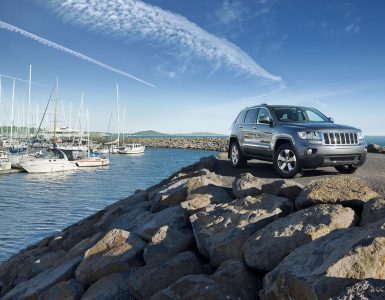Researching car prices is an intensive process. It requires you to go through hidden dealer discount offers, reading price guides, checking MSRPs, and doing online research.
Your research has to pay off. You’ve got to find the most accurate information possible. This is something we’ll help you out with.
Below, we’ll mention important sources of information that will shape your decision on car prices. The sources should help you gauge whether a price you’re seeing is fair or not!
Look at Sticker Prices
This is the most accurate summary you’ll find of a new car’s price. Of all sticker prices, we recommend you check out the Monroney sticker. It’s named after a US senator, who 1st brought forward an act that mandated sticker prices to be shown on all vehicles.
With a sticker price, a car has a visible price tag, in addition to a list of features that come with that specific car model. This helps reflect the full price of the car. And it also defines the prices suggested by manufacturers for different options in a car.
Seek Averaged Pricing Info
You can look for summaries on the models and makes you have in mind with average price guides. One is the Kelley Blue Book website, which is a database of updated prices for all trucks and car you can think of.
Through the Kelley Blue Book, you can narrow down your research based on features you’re looking for. For example, you can specify body styles, car conditions, and certain features. That way, you can find averaged MSRPs of the vehicle you seek. Additionally, the Kelley Blue Book provides dealer invoice prices for the car. It’s the price paid by dealers to buy the car from manufacturers. And it helps you gauge whether or not you’re receiving an excellent deal.
Look At Additional Websites
The Kelley Blue Book isn’t the only guide out there for average car prices. You can also visit True Car, which provides detailed information about prices reasonable to pay for a car. Or, you can find what people actually paid to buy the car you’re considering. By looking at additional websites, you can compare values from each, creating an accurate view of car prices.
A source that is recommended for car pricing is the NADA, or National Automobile Dealer’s Association. They provide not only car reviews for what is sold on market, by you also get comparisons between different cars. This is useful information, in case you want to compare what dealers say with what reviewers and consumers see.
Check the Paper
Just because the internet is easy to access, doesn’t mean you should ignore the newspaper. Dealers post ads for cars, and specifically advertise specials. There are many times when price-tags in newspapers are at a bargain level, at least on 1st inspection. Regardless, those tend to be for cars that are losses to consumers, which may be harder to service, or that are lacking in features for consumption.
Still, you can take advantage of bargain prices for cars. All you have to do is go to your dealership as soon as you can. There, you’ll find specials with heavy discounts that do not normally last long. Thus, you’ve got to be fast in snapping up bargains that will save you thousands!
Price Comparison On-Lot VS Online
You should use the internet to research car prices. But be wary of believing all the information given to you by online car dealers. They may offer top prices claiming excellent features, while only paying a dealer invoice price for a car that you can find for cheap. So make sure you use the internet to check for offline dealer offers instead. The comparison process will make sure that you are prepared before negotiating car prices. You’ll also have a standard in mind as to what you want in the car that you’ll buy.
There is so much information to take into account when pricing new cars. Those factors must be understood by all consumers, including you, to help you make an informed decision on your next purchase. It could be for a truck or a car. But regardless, you want a good offer from a dealer, even though dealers are in the business to profit from selling you cars. Basically, find good prices, without letting dealers suck too much money from you.
Also Read:
- The Basics of Car Insurance
- The Simple Guide to Car Financing
- The Simple Guide to Car Financing: Shopping for Loans
New Car Pricing Basics.
When thinking about buying a new car, there are 2 vital numbers that you must keep in mind. The 1st is the MSRP or Manufacturer’s Suggested Retail Price. Here, a manufacturer recommends you a proper price for the car at a dealership. Normally, dealers will sell cars for lower than MSRPs.
Then there’s the dealer invoice price, which is a transaction that doesn’t involve the consumer. This is the price a dealer pays manufacturers to get the car from them, before selling it to you. This price is similar to all dealerships across the country. The manufacturer defines that base price, and then adds extra costs depending on options and extra features. Finally, there are also additional charges that increase the invoice cost, such as shipping and destination charger, in addition to dealer prep prices, and add-on services.
Hidden Dealer Discount.
Invoice prices show how much dealers pay manufacturers for a new truck or car. However, this isn’t the true prices that dealers end up paying manufacturers. Usually, manufacturers provide incentives to dealers for car purchases at cheaper prices, in the form of holdback allowances. Such holdback amounts are charged for every sold vehicle, and amounts are between 1-3% based on the car manufacturer. Thus, a lot of dealers can still profit from selling a car at invoice prices, however minimal the profit margin is.
Additionally, dealer costs are lowered while including rebates for specific makes and models. With dealers being customers of manufacturers, their rebates decrease the amount of money a dealer pays for a car. So they end up getting a car for less than the invoice price.
Dealer Add-on.
After dealerships receive new cars or trucks from manufacturers, they’ll usually add other features to the car. They include treatment for stains, spraying to protect from rust, and pin stripes. Each of these services pushes up the price of the vehicle, and the consumer is the one who usually foots the bill.
Also, some dealerships try to adjust car prices to minor market movements, in order to increase costs. This usually is model specific, and depends on the location you’re buying the car from. This is often applied to vehicles that are high in-demand, and sell for high prices with ease, where negotiations are often smooth.
Frequently Asked Questions.
What’s the Relationship Between MSRPs and Kelley Blue Book Pricing?
Many years ago, the Kelley Blue Book was a standard in pricing cars and trucks of all models, both old and new. They used the book to know how much they should pay for a specific car, depending on options and conditions, and provided from different dealers in the same area.
On the other hand, the MSRP is not based on a sampling of actual auctions or purchases, but is what the manufacturer suggests as the appropriate car price. This is necessary for dealerships to make fair profits. A lot of dealerships will sell cars at lower prices than the MSRP, giving the consumer the feeling that they’re getting an excellent deal.






Add comment